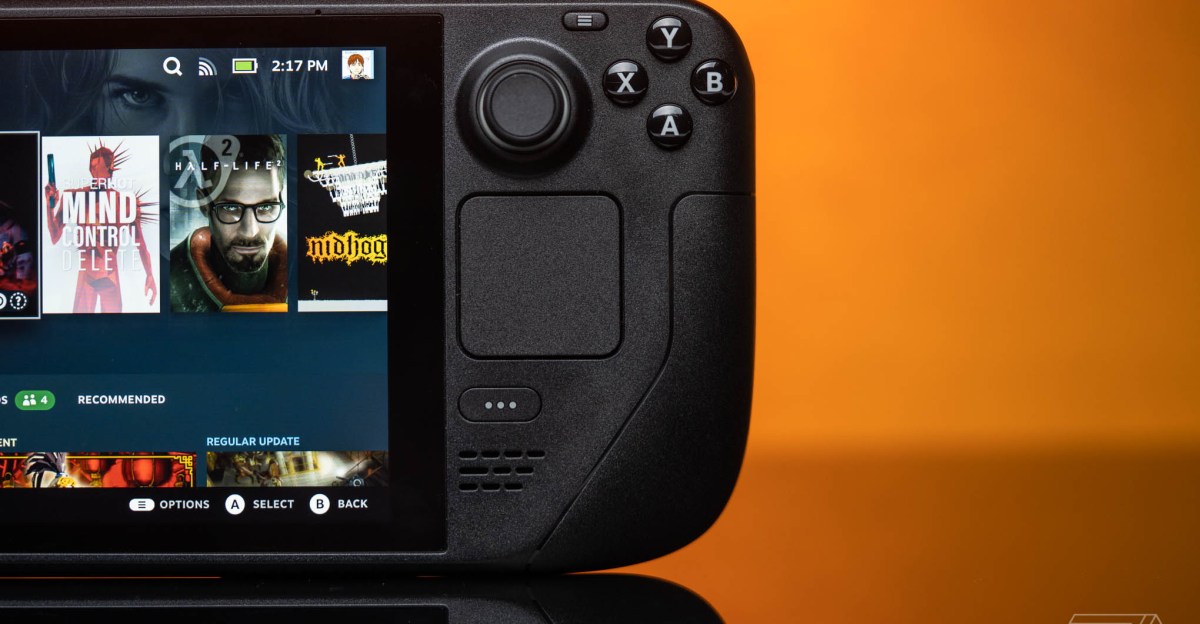The latest SteamOS update from Valve marks a significant step forward, not only for Steam Deck users but also for owners of rival AMD handhelds. SteamOS 3.7.8 is now available, bringing a host of new features and improvements. This update officially extends support to devices like the Lenovo Legion Go and ASUS ROG Ally, leveling up the handheld gaming experience.
This release is more than just a simple upgrade; it’s a strategic move by Valve to create a more unified ecosystem for handheld gaming PCs. By providing an official recovery image for installing SteamOS on other devices, Valve is lowering the barrier to entry and encouraging more users to explore the benefits of its operating system. This article dives deep into the key features of SteamOS 3.7.8, its impact on Steam Deck, and what it means for the broader handheld gaming landscape.
Official Support for AMD Handhelds
SteamOS 3.7.8 officially supports Lenovo Legion Go, offering an official “recovery” image that lets you install SteamOS on other AMD handhelds like the ROG Ally. Now, Valve offers clear instructions for getting that image working on a Legion Go or ROG Ally, even as it warns that “support for all devices that is not officially ‘Powered by SteamOS’ is not final.”
Previously, users had to rely on community-created methods to install SteamOS on non-Steam Deck devices. Now, Valve provides a dedicated recovery image, streamlining the installation process and ensuring a more stable experience. This move signals Valve’s commitment to expanding the reach of SteamOS and fostering a more open ecosystem for handheld gaming.
Bluetooth Audio Improvements
Bluetooth connectivity gets a major boost with SteamOS 3.7.8. For a long time, Steam Deck users have wanted to use Bluetooth earbuds’ microphone since launch. Finally, it’s happening in desktop mode (sadly not gaming mode yet) thanks to HFP/HSP profiles. This enhancement greatly improves the versatility of the Steam Deck, allowing users to seamlessly switch between gaming and communication without needing wired headsets.
The addition of HFP/HSP profiles is particularly beneficial for gamers who want to chat with friends while playing online or participate in voice conferences while using the Steam Deck as a portable workstation. This improvement addresses a long-standing pain point for many users and makes the Steam Deck a more well-rounded device.
Power and Display Features
This update introduces handy features for users who frequently dock their Steam Decks. You can turn on your Steam Deck LCD from across the room with a Bluetooth controller, a feature previously exclusive to the OLED model, which comes in handy when you’re docked to a TV. Gamers now have the option to set a Battery Charge Limit to 80 percent for longevity’s sake if your handheld is always plugged in, frame-limit variable refresh rate displays, and control the P-state frequency of certain AMD CPUs.
These power and display management features will come as good news for those looking to optimize their Steam Deck experience. By limiting the battery charge, users can extend the lifespan of their device’s battery, especially when it is primarily used in docked mode. Furthermore, support for variable refresh rate displays ensures smoother gameplay and reduces screen tearing.
Under-the-Hood Updates
Beyond the user-facing features, SteamOS 3.7.8 brings a host of under-the-hood improvements that enhance the overall performance and stability of the system. It’s all underpinned by new versions of Arch Linux, new Mesa graphics drivers, a much newer version of the Plasma desktop mode, and more.
These core updates lay the foundation for future enhancements and ensure that SteamOS remains up-to-date with the latest advancements in the Linux ecosystem. By incorporating new versions of Arch Linux and Mesa graphics drivers, Valve is providing Steam Deck users with access to the latest performance optimizations and security patches.
Expanding the SteamOS Ecosystem
The move seems to suggest that Valve is ready to expand SteamOS beyond Lenovo and the Steam Deck. “We’re currently working with select partners on officially licensed Powered by SteamOS devices. Please reach out to us at for more information about licensing SteamOS for your device,” one answer reads.
This signals a potential shift towards a more open ecosystem, where other manufacturers can leverage SteamOS to power their own gaming devices. The possibility of officially licensed SteamOS devices could lead to a wider variety of handheld gaming PCs and consoles, all running on the same unified platform.
Valve’s Future Plans
But the industry is still waiting for Valve’s other shoe(s) to drop. Rumors are still heating up that we’re close to the launch of Valve’s wireless VR headset “Deckard,” and that it might be pointing the way toward a SteamOS-powered living room console too. Valve has been moving slow and steady, but it seems like .
These potential future developments suggest that Valve is committed to building a comprehensive gaming ecosystem that extends beyond the Steam Deck. Whether it’s a wireless VR headset or a living room console, SteamOS is likely to play a central role in Valve’s future hardware and software offerings.
Conclusion
SteamOS 3.7.8 is a major update that brings a range of improvements and new features to Steam Deck users. The official support for AMD handhelds is a game-changer, opening up the SteamOS ecosystem to a wider audience. With enhanced Bluetooth connectivity, improved power management, and under-the-hood optimizations, this update solidifies SteamOS as a top contender in the handheld gaming space.
As Valve continues to invest in SteamOS and explore new hardware ventures, the future looks bright for handheld gaming and the broader Steam ecosystem. This update is a testament to Valve’s commitment to innovation and its vision for a more open and unified gaming experience.

Leave a Reply